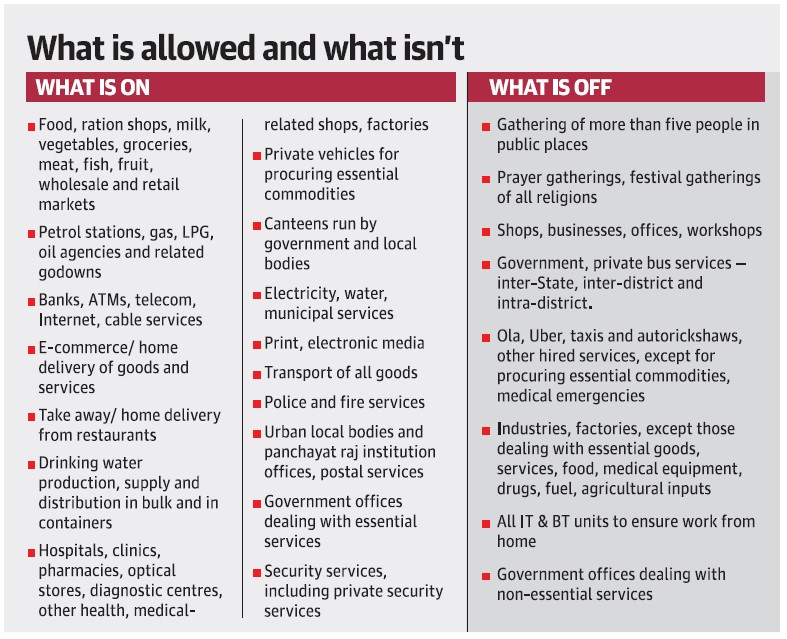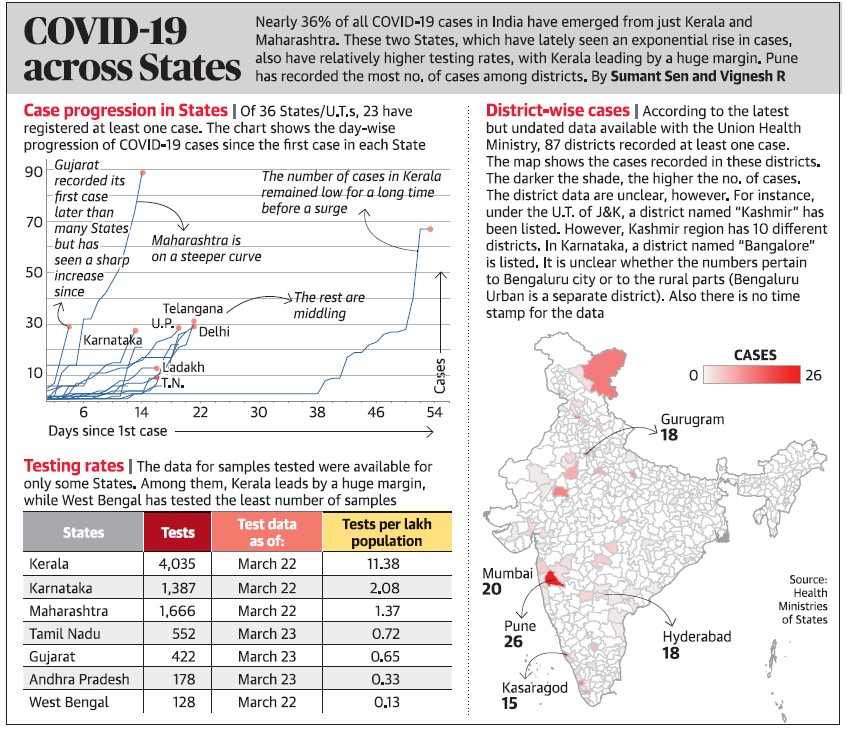Focus: GS-III Disaster Management
Why in news?
Scaling up the precautionary measures to prevent the spread of COVID-19, the Karnataka government on 23rd March 2020, enforced “curfew-like” restrictions across the State from 24th March 2020, and will be in force till March 31 2020.

Details
- All public and private transport including Uber, Ola and autos will be off the road, while only essential services will be available across the State.
- The government, which had initially announced restrictions only in nine districts that had reported COVID-19 cases, later revised the order to cover the entire State.
- The government has enforced this under Epidemic Disease Act, 1981, making more stringent the guidelines put in place earlier.
Concerns in the State of Karnataka
- Karnataka State Government Medical Education Minister had expressed concern that despite declaration of lockdown, people were not completely confining themselves indoors.
- This would increase the chances of the spread of the virus, he observed, while pointing out that so far the State had reported 33 positive cases of COVID-19.
Measures taken by the Karnataka Government to control the COVID-19 Spread
- Only services and activities related to health, medicine, agriculture, and grocery would be allowed to operate in these districts, the Minister said.
- Similarly, industries would be asked to ensure that only 50% of their workforce were deployed for work.
- Government and private offices would be classified as “essential” and “non-essential” services depending upon the nature of operation and only those in the essential sector would be allowed to operate.
- The government had decided to strictly quarantine and test all those who had come in contact with the COVID-19 patients.
- It had been decided to test at least 200 people for a population of 10 lakh, he said.
- To facilitate this, licences would be granted to more number of government and private labs.
- The government would obtain the services of police in keeping a vigil on the C-category international travellers who have been home quarantined.
- The family members of such persons would also be quarantined and the police would be instructed to paste notices on their houses and also inform locals about it.
- A vigilance team comprising senior IAS officers had been formed to monitor the situation.





